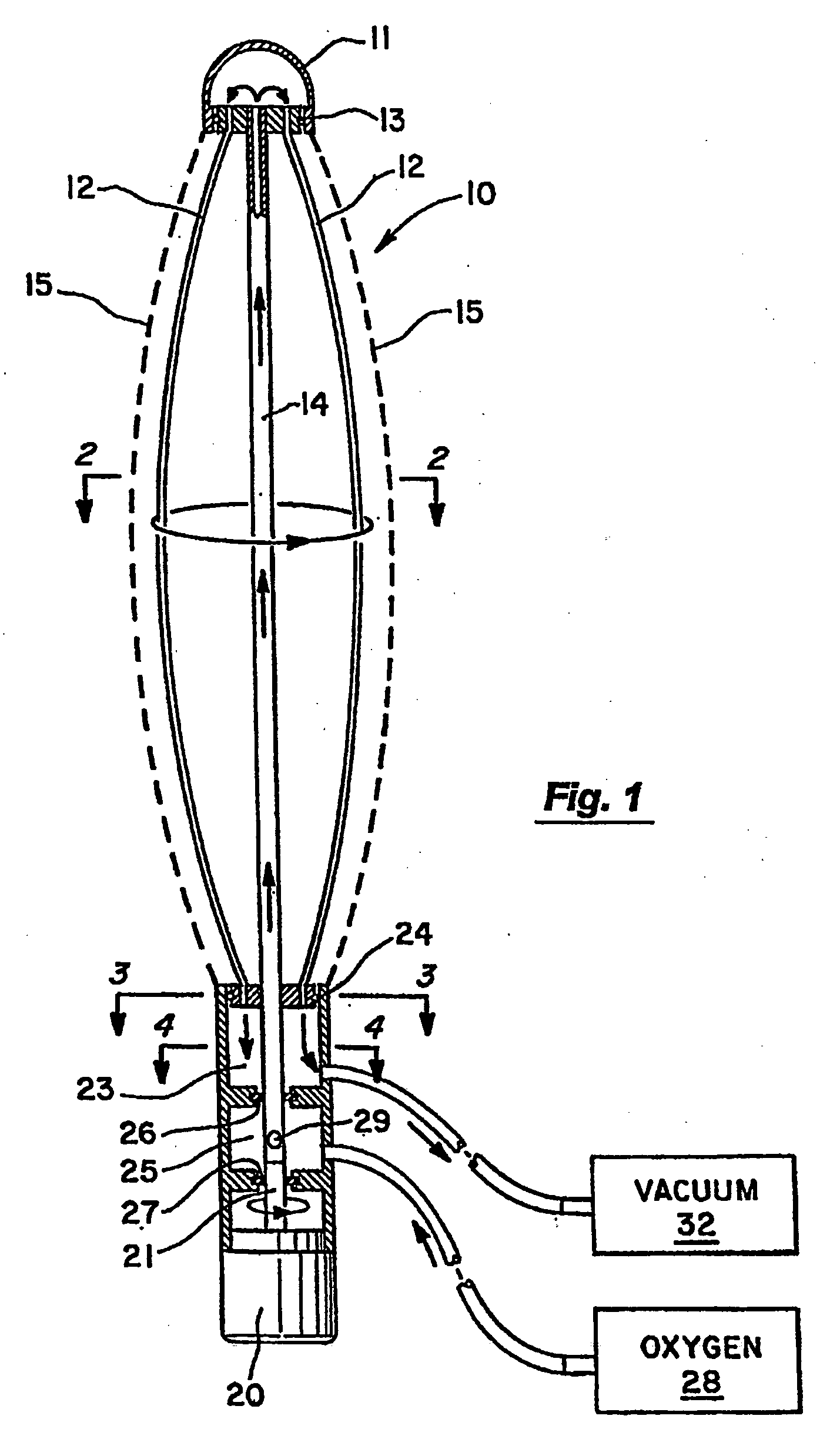Percutaneous respiratory assist catheter incorporating a spinning fiber bundle
- Summary
- Abstract
- Description
- Claims
- Application Information
AI Technical Summary
Benefits of technology
Problems solved by technology
Method used
Image
Examples
Embodiment Construction
[0037] As shown in the drawings for purposes of illustration, the present invention is directed to a percutaneous respiratory assist catheter having a rotating or spinning fiber bundle fabricated utilizing hollow fiber membranes. U.S. Pat. Nos. 4,911,689 (Hattler); 4,986,809 (Hattler); 5,122,113 (Hattler); 5,207,640 (Hattler); 5,219,326 (Hattler); 5,271,743 (Hattler); 5,376,069 (Hattler); 5,501,663 (Hattler et al.) and 5,865,789 (Hattler) are incorporated herein in their entirety by reference.
[0038] The respiratory assist catheter of the present invention is configured with hollow, gas-permeable fibers extending between a distal. manifold and a proximal manifold that permit diffusion of gases between the patient's blood and interior of the fibers. A rotatable support member extends through the proximal manifold and into the distal manifold. The catheter includes bearings and seals within or adjacent to the proximal and distal manifolds. The support member may include a lumen in com...
PUM
 Login to View More
Login to View More Abstract
Description
Claims
Application Information
 Login to View More
Login to View More - R&D
- Intellectual Property
- Life Sciences
- Materials
- Tech Scout
- Unparalleled Data Quality
- Higher Quality Content
- 60% Fewer Hallucinations
Browse by: Latest US Patents, China's latest patents, Technical Efficacy Thesaurus, Application Domain, Technology Topic, Popular Technical Reports.
© 2025 PatSnap. All rights reserved.Legal|Privacy policy|Modern Slavery Act Transparency Statement|Sitemap|About US| Contact US: help@patsnap.com



